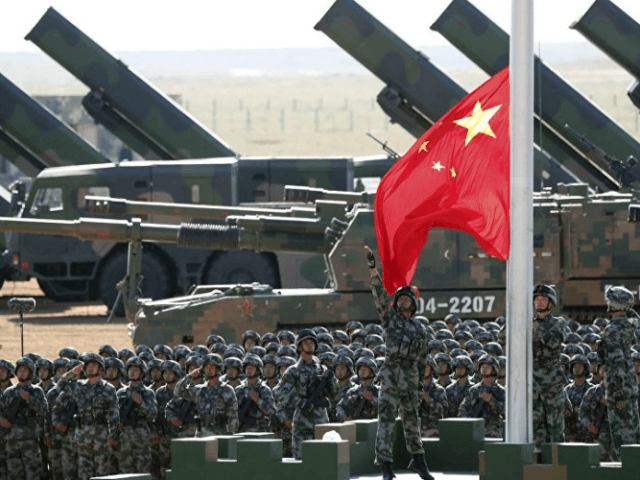Recent satellite photographs appear to show that China’s military has expanded its nuclear test facilities in occupied East Turkistan, the predominantly Uyghur region where the Communist Party is committing genocide, according to an analysis by Nikkei Asia magazine published on Monday.
Nikkei Asia obtained the recently captured satellite photos from Planet Labs, a U.S.-based public Earth imaging company, and reviewed them alongside experts to determine their significance. The Japanese news magazine shared its findings on August 1, writing:
Extensive coverings have been erected on a mountainside in this arid region, and broken rocks piled up nearby are believed to be evidence of excavation of a new “sixth tunnel” for testing hidden beneath.
Power transmission cables and a facility that could be used for storing high-explosives have recently been installed, while unpaved white roads lead from a command post in various directions.
The evidence of new construction was detected by a satellite 450 kilometers [280 miles] above Lop Nur, a dried up salt lake in the southeast of Western China’s Xinjiang Uyghur Autonomous Region [East Turkistan]. Many analysts believe that the secret nuclear testing area is secured by the [Chinese] People’s Liberation Army [PLA].
The satellite images of East Turkistan’s Lop Nur region cited by Nikkei Asia on August 1 were obtained sometime between June and July, as the magazine noted that the site’s suspected storage facility was completed in June. According to the publication, satellite imagery first captured Chinese military workers leveling terrain near Lop Nur in October 2020 before documenting large trucks driving through the area sometime in 2021.
“[T]he power infrastructure for the sixth tunnel was built in the first half of 2022,” according to Nikkei Asia.
The magazine further revealed that “increased radiation” was detected alongside the development at Lop Nur over the past two years.
China’s PLA last conducted underground nuclear tests at Lop Nur in 1996, according to official records. The military’s recent activity near the lake — especially its suspected tunnel construction — suggests that Beijing plans to resume such activity in the region.
While China’s nuclear arsenal has aged since its last nuclear test at Lop Nur over a quarter century ago, Beijing has made efforts to boost its nuclear capabilities in recent years.
“As of 2020, the country [China] was developing new intercontinental ballistic missiles, or ICBMs, that would ‘significantly improve its nuclear-capable missile forces,'” Voice of America (VOA) relayed in January citing an annual report by the U.S. Department of Defense.
“The number of [Chinese] warheads on land-based ICBMs ‘capable of threatening the United States is expected to’ reach about 200 over the next five years, the Pentagon report said. Beijing had previously maintained just 20 or so silo-based ICBMs, the Carnegie Endowment for International Peace said in a 2021 study,” VOA observed.

COMMENTS
Please let us know if you're having issues with commenting.